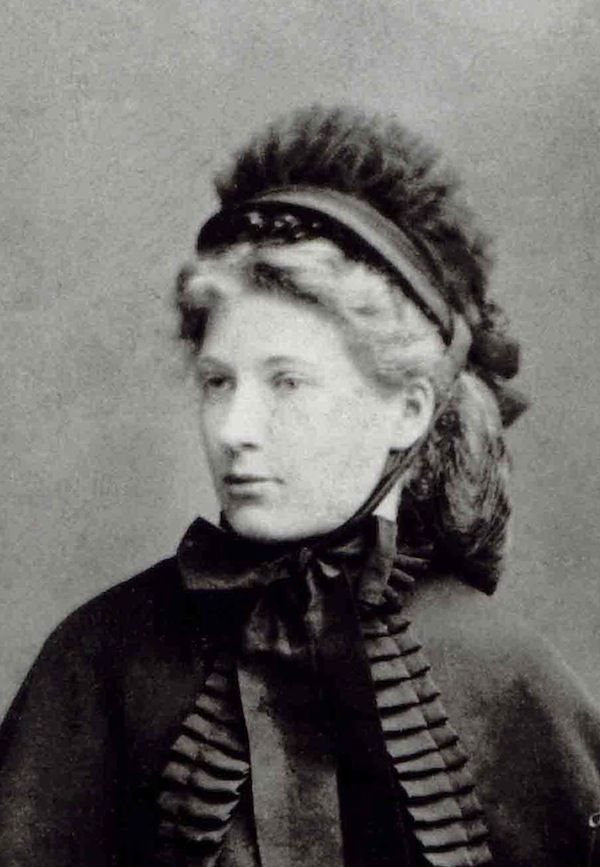

Queer Places:
Cimitero Monumentale della Foce, Via San Rocco 8, Sanremo, Liguria
 Elisabeth von Herzogenberg née Elisabet von Stockhausen (born in
Paris on 13 April 1847; died in Sanremo on 7 January 1892) was a German
pianist, composer, singer and philanthropist.
Elisabeth von Herzogenberg née Elisabet von Stockhausen (born in
Paris on 13 April 1847; died in Sanremo on 7 January 1892) was a German
pianist, composer, singer and philanthropist.
Daughter of Freiherr Bodo Albrecht von Stockhausen, who worked as a diplomat for the kingdom of Hanover. Her mother was Clotilde, Countess de Baudissin. Her father had been a pupil of Frédéric Chopin and Charles-Valentin Alkan. The family lived in Paris until they moved to Vienna when Elisabeth was five years old. In Vienna she was a pupil of the organist Theodor Dirzka and of the pianist Julius Epstein. For a short time Johannes Brahms also taught her. But it seems that he fell in love with her and was unable to continue the lessons, returning her to the care of Epstein.
Although a Protestant, in November 1868 she married the Catholic Heinrich von Herzogenberg (1868-1892).[1] They lived in Graz until they moved to Leipzig in 1872. In these years Brahms was a close friend of Clara Schumann and from 1876 onwards he often stayed with Elisabeth and her husband when he was in Leipzig. As an aristocratic musician, she largely did not perform or publish for the public,[3] but did arrange children's folk songs.[4] Ethel Smyth devoted chapter XX of her Impressions That Remained: Memoirs to her.[5]
Ethel Smyth attended the Leipzig Conservatory, where she met many composers of the day. Her compositions include songs, works for piano, chamber music, orchestral and concertante works, choral works, and operas. In Leipzig in 1878 she met her first lover, Elisabeth "Lisl" von Herzogenberg. Smyth once admitted, "If ever I worshipped a being on earth it was Lisl." However, in 1882, on a visit to Florence, Smyth was introduced to Lisl's sister, Julia Von Stockhausen, and Julia's husband, Henry Bennet Brewster, a writer and poet. At first it was Julia who was interested in Smyth, but in the end it was Henry who fell in love with her. Two years later, Smyth clained to reciprocate his feelings. Lisl died in 1892 and Julia in 1896. Henry proposed Ethel, but she refused. Henry died of cancer in 1908. Once Vernon Lee asked Smyth, "to how many people have you given without reserve and got something like the equivalent in return?", and Smyth replied: "Lisl, Harry and a third, unnamed, person." Lee deduced the third person was Lady Ponsonby, Queen Victoria's lady-in-waiting.
In 1885 Lisl's husband became a professor in Berlin. They both suffered from health problems and they went to Sanremo in 1891 because of the better climate. There she died early in 1892, aged only 44. She was buried in Sanremo. There were no children from the marriage. She and Brahms were friends until her death and Brahms would carry a small photograph of her until his own death.
Many of her compositions were lost, but her "Acht Klavierstücke" were published posthumously by her husband. He died in 1900 in Wiesbaden and was buried there.
My published books: